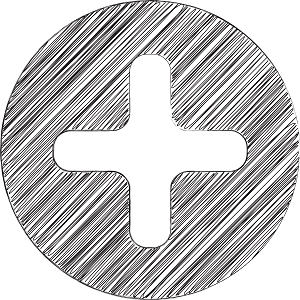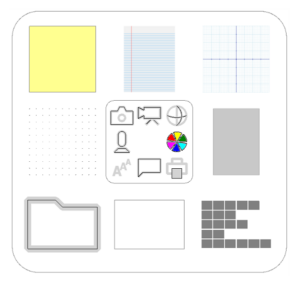I have to tell it like it is. Many times when I see a terrific interactive display or a brilliant new projector, I have to wince a bit, because the content or the interface tool being demonstrated simply doesn’t do the hardware justice. I simply wonder why more exceptional display technologies can’t be married with something else that will help put the device’s best foot forward, and not hold it back.

 It seems as though we find ourselves in a content/tool malaise. A perfect example of this sense of fatigue is evidenced in the fact that nearly every software tool coupled with otherwise remarkable hardware at recent education conferences tastes bland to my discriminating customer palate. The home-spun or partner-created software tools that are included with new interactive displays, interactive whiteboards, or vivid projectors frankly don’t excite me anymore. They are all the same. Nor, do I feel, do they advantage the products that host them. Great display technologies require a commensurate and worthy partner, a plus-one if you will. I believe that the growth trajectory of a new technology will not accelerate to the degree desired in education without such a combination; only by joining together in symbiosis with other enabling tools can innovative technologies be hoisted into redoubtable prominence.
It seems as though we find ourselves in a content/tool malaise. A perfect example of this sense of fatigue is evidenced in the fact that nearly every software tool coupled with otherwise remarkable hardware at recent education conferences tastes bland to my discriminating customer palate. The home-spun or partner-created software tools that are included with new interactive displays, interactive whiteboards, or vivid projectors frankly don’t excite me anymore. They are all the same. Nor, do I feel, do they advantage the products that host them. Great display technologies require a commensurate and worthy partner, a plus-one if you will. I believe that the growth trajectory of a new technology will not accelerate to the degree desired in education without such a combination; only by joining together in symbiosis with other enabling tools can innovative technologies be hoisted into redoubtable prominence.
Enough with the pontificating.
While recently waltzing through the festive exhibit hall aisles at Educause, a higher-ed conference held in Denver, I recognized a tool that I have been quietly tracking in its development for more than a year. I had gone onsite for a full briefing at the company’s headquarters, but was asked to remain silent at that time, and so I honored that request, as I always do. But now—here they were—at the largest conference for higher ed in the U.S., pulling out all the stops.
The company is named Tapist. Their product is their Tapist presentation/ collaboration/ annotation/ whiteboarding/ management/ note-taking/ organizer tool. It’s hard to describe because it does all of those things on almost any device. According to the company, “Tapist operates up and down the device spectrum, from mouse-enabled laptops, to touch tablets, interactive projectors and whiteboards, and large interactive flat panel displays.”
I know Tapist also struggles to describe this break-the-mold product, preferring to call it a “doorway into an information space delivering natural/organic fingertip gesture controls that capture annotations, images, lectures, worked problems, lab reports, really anything you might think to do on a whiteboard, scratch paper, notebook, or table top.” That doesn’t help me either. That’s too wordy. Let me take a shot.
Tapist is ‘whiteboarding’ software on steroids, yet simply approached. Yes, it does presentation, annotation, recording, filing, storing, and more, but it’s not the clunky ho-hum we always see showcased on other interactive devices. It’s a more flexible canvas for everything you may do in the classroom or corporate meeting room, and that includes curation, streaming, simulations, portfolio making, and even ‘swirling’ (easily running a presentation timeline forwards and backwards in time). It is, at the same time, richly visual, minimalist, and seamless in its gesture control.
One of Tapis’ annotation control panels
Tapist is like a free-form digital tapestry. (They call it frictionless.) It is capable of supporting spontaneity and planned structure at the same time. It allows just-in-time content creation or instant retrieval of pre-prepared digital resources. It uses modular, exchangeable, and portable building blocks, called ‘glyphs’ to lend a certain agility to its use. In short, the digital aptitude of Tapist is entirely delightful.
Selecting a background template on a Tapis blank slate
As I stated previously, technologies can frequently be symbiotic in nature; that is, most effective when combined with another technology. (The German mycologist Heinrich Anton de Bary explained symbiosis as “the living together of unlike organisms.” In the field of life sciences, symbiosis is defined as a close and prolonged association between different organisms of different species that in some way benefit each other. In a sociological or psychiatric context, it refers more to a relationship of mutual benefit or dependence. And in modern business culture, we think of a memeplex, a combination of ideas that is more likely to survive and thrive together than apart.)
And, so, here’s my bottom line: this is the kind of tool that should be combined with projectors, interactive whiteboards and displays, because it is fundamentally transformational, novel, agile, utilitarian, and powerful. This tool will help sell your display products. Still, in my way of thinking, Tapist’s website doesn’t frame this product well. Rather, ask for a demo. You’ll be glad you saw it first hand. Watch for my deep-dive continuing thoughts about Tapist later in the new year. –Len Scrogan

